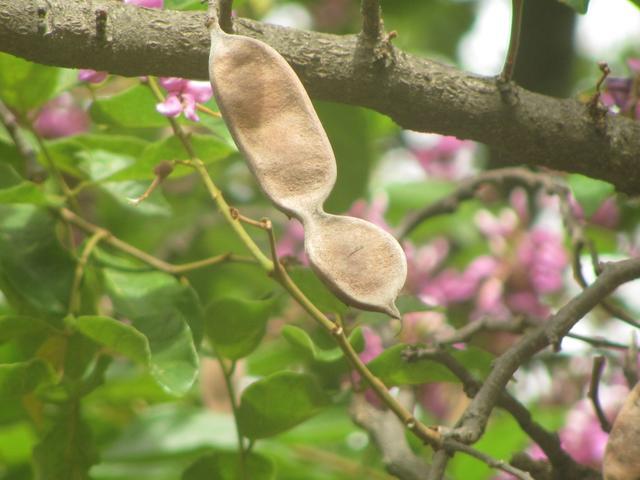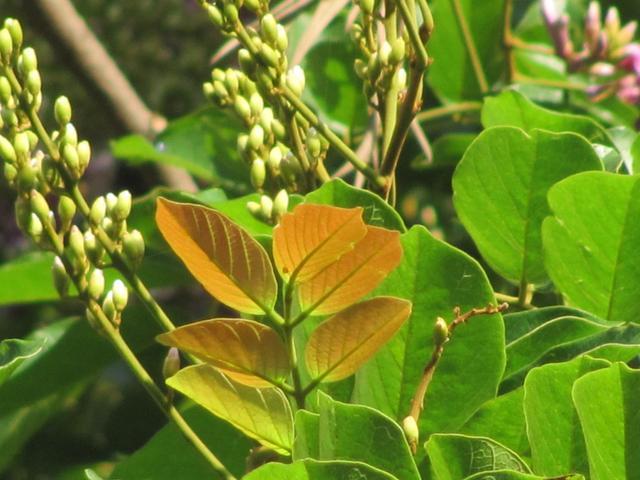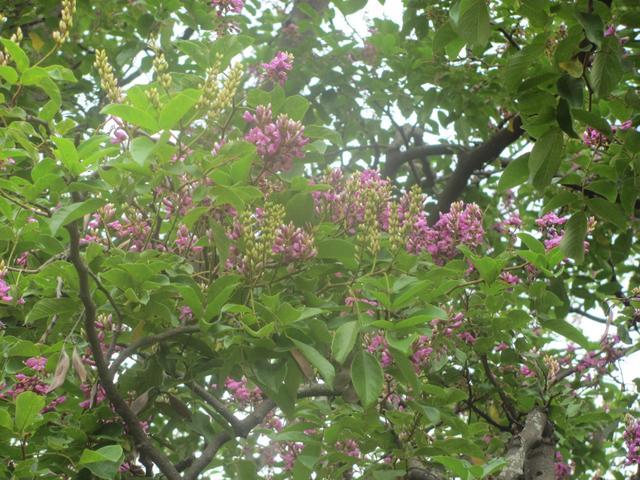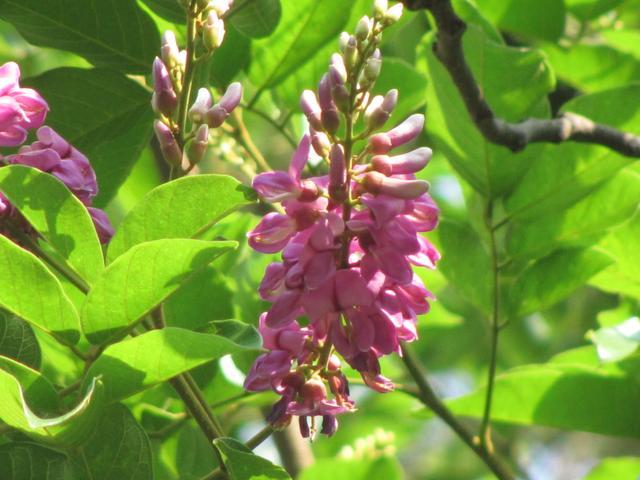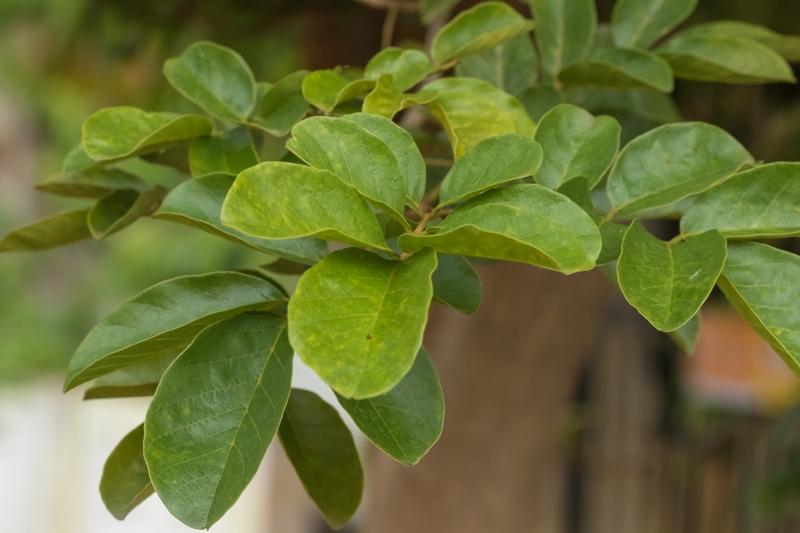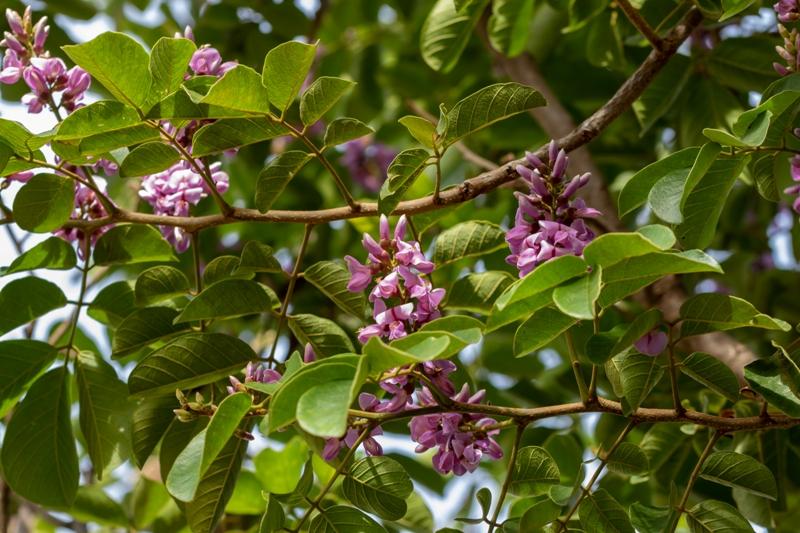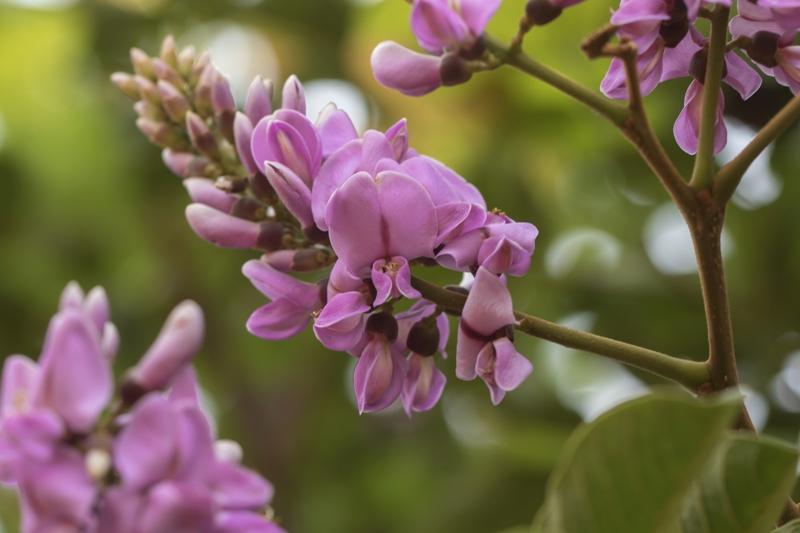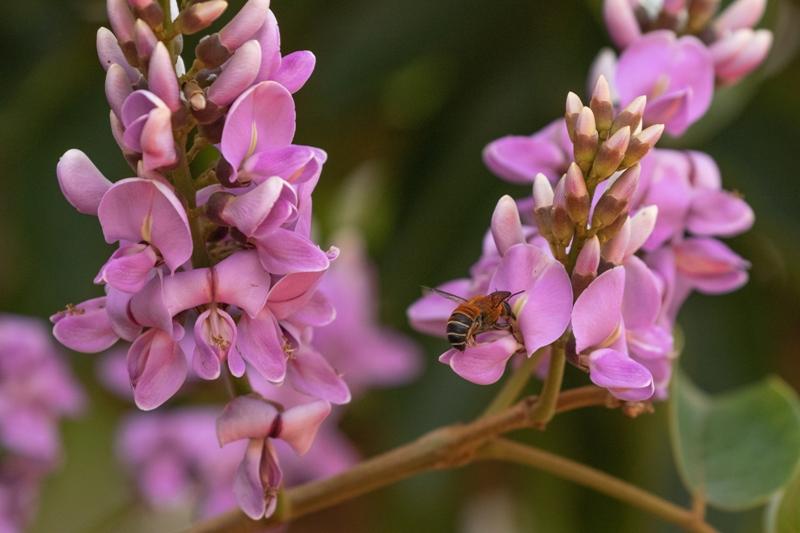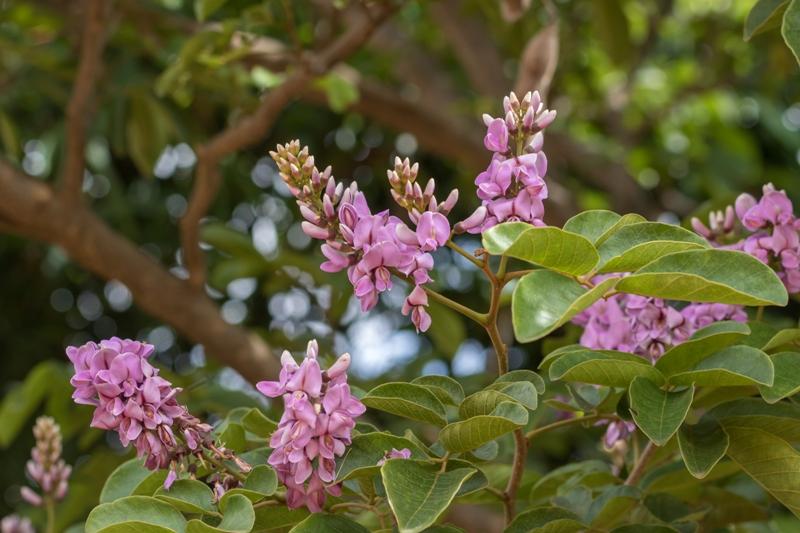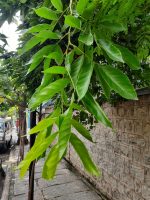|
Lonchocarpus sericeus (Poir.) DC. (syn: Derris sericea (Poir.) Ducke; Lonchocarpus cruentus Lundell; Lonchocarpus formosanus DC.; Lonchocarpus pyxidarius DC.; Lonchocarpus sericeus subsp. sericeus ; Robinia sericea Poir.);
.
Re190911-MS -46-ID needed: … species of Millettia ? Not sure at all, just a guess. This is Milletia peguensis or what we call the ‘Burma honge’ in Bangalore nurseries because it resembles our Honge tree (Pongamia pinnata).
Its an avenue tree in Bangalore but not very common as they have been planted in different places here and there.
I have seen them in Basaveshwaranagar, Rajajinagar etc.
Fls are very bright magenta in colour but resemble ‘Honge‘ flowers and fruits contain 3 to 4 seeds and are very different from P.pinnata. Can it this one? Somebody suggested it can be Lonchocarpus As suggested by … this could be a species of Lonchocarpus (L.sericeus). I will check the characters again . This is actually a very rare tree that I found in Mysore and try to take fresh photographs if the tree is in flowering I think matches with Lonchocarpus sericeus Images as identified by … in another thread. . Fabaceae week : Re190911-MS -46-ID needed: It may be Millettia peguensis Earlier also this was suggested to be M.peguensis by one of the experts. However, when I checked the leaves, I got some doubts. The leaves are quite different when compared to the photographs of M. peguensis posted by …, today. Can it this one? Somebody suggested it can be Lonchocarpus
183. Lonchocarpus sericeus, (Poir.) Kunth ex DC. — Pink Lilac Tree As suggested by … this could be a species of Lonchocarpus (L.sericeus). I will check the characters again . This is actually a very rare tree that I found in Mysore and try to take fresh photographs if the tree is in flowering. I think matches with Lonchocarpus sericeus Images as identified by … in another thread.
Re190911-MS -48-ID needed for a Legume treespecies.:
I am attaching the photographs of a tree species. Place: On a road in Mysore city. Date of photograph: July, 2011 Whoever has access to ‘Manual of cultivated plants’ by Bailey may look into this exotic leguminous tree. I think this is one of the Lonchocarpus species. Further more the photos sent under the link Fabaceae week-190911-MS -46-ID needed also look almost similar I think matches with Lonchocarpus sericeus Images as identified by … in another thread.
Milletia ovalifolia This is Lonchocarpus sericeus Thank you so much, … agree with you, Request Tree ID 51 – Bangalore – RA – Is it some variant of quickstick (Gliridicia)?: Indiranagar, Bangalore Looks like a Millettia (African) or possibly a Lonchocarpus (tropical American) species. I will keep looking if it matches anything.
There are so many trees in one street of defency colony, indiranagar, bangalore Closest I came acroos was : Lonchocarpus punctatus Millettia peguensis ? It looks like Lonchocarpus sericeus. Pls check the season of flg. It is usually during January – April and quite often the tree will be leafless but full of violet coloured fls. But the Fruit is not exactly tallying. I am searching for the photos I had taken. If I get it I will load it. I have also uploaded one species of Lonchocarpus species , probably L. sericeus. These photographs have common features of leaf and flowers. Therefore, I presume this is also a species of Lonchocarpus. Its started flowering now (June-July) in Bangalore.
There is street full of these trees in indiranagar, and many cross streets of indiranagar. The flower looks it, but the fruits in your picture look more flatter.
I can break open one of them and compare the seeds I think matches with Lonchocarpus sericeus Images as identified by … Yes. It is Lonchocarpus sericeus (Poir.) DC. The ID by … is perfect. I have also photographed this tree in Mysore and Id(ied) long back. I do not know whether I posted the pictures. 12 posts by 5 authors. Attachments (6)
Kindly examine and identify this medium sized tree belonging to Fabaceae. Could this be a Robinia sp……?
Habit: Medium sized tree.
Habitat: Urban Planting
Sighting: Tumkur, Karnataka
Date: 25-06-2018 and 30-06-2018.
check Robina pseudoacacia or a black locust. seen often on the Atlantic sea board. what i dont see here are the thorns that i remember too well. do you have more pictures? or possibility of visiting the tree again to look for the thorns on trunk and lower branches. I hope you can, seems you are the conservator of that forest. wonderful.
interesting reading here: https://herbaria.plants.ox.ac.uk/bol/plants400/Profiles/qr/Robinia
and details of geographic spread now: http://www.worldagroforestry.Robinia_pseudoacacia.PDF
Honey locust is different, see second or the third paragraph
https://www.gardeningknowhow.locust-tree-information.htm Thanks …, There are quite a no of trees in the vicinity, obviously planted by the forest dept. I will revisit and look for the thorns as you suggested. Please check Millettia pinnata.
Correction, please check Millettia. The seed pods are not the same as M. pinnata, sorry for my too quick typing. Thanks for your response. Could be Millettia peguensis also. Keeping my fingers crossed.
visited the tree a day before as suggested by you. Couldn’t find spines or thorns. The bark is smooth. Uploading a few recent images.
Attachments (4) To me looks different from images at Millettia pinnata, Millettia peguensis and Robinia pseudoacacia
Appears close to images at Lonchocarpus sericeus (Introduced)
This is Lonchocarpus species. I think I have posted photographs from Mysore long back. thank you … for revisiting. no thorns. definitely rules out the locust tree. what is it: i just don’t have time or mental energy now to do the. differential diagnosis myself, too much going on in my family. i will go with what is done said by … he knows his street trees in Mysore. .
MS/ID/FEB/2021/1 – ID of the tree: 5 images. One more photograph enclosed. Check with Millettia sir We have both the species here. Milletia is different, though it looks closure to this species. I agree with … .
 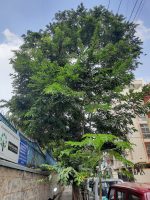 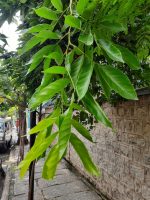 Identification Request AR 200: 3 images. I see these trees in streets of Malleshwaram, Bangalore. Odd pinnate leaves and grey bark.
Tried, but unable to reach anywhere. They are tall trees, and local people say that its a forest tree, and it flowers in Mar/Apr.
Its puzzling for me for weeks now. I have seen around 10-12 trees.
The leaflets are somewhat wavy, and very smooth, around 7/9 leaflets.
The bark is grey and shiny in some trees.
They are somewhat like ailanthus (or like coconut) where there are no leaves or branches close to 15/20 ft from the ground.
I will wait for somebody else to throw some light.
Flowers/ fruits, when they come, may be of help. Can you post high res. images?
It may give better clues for id.
Magnolia champaca ?? I do not think so. Definitely not M.champaca. M.champaca is a very common tree in Mysore & Bangalore and leaves are quite different.
Not magnolia the bark is so different and leaves more wavy and turns yellow when falling I meant magnolia leaves are more wavy and turns yellow when falling. The younger leaves are more reddish in these trees.
I haven’t taken my camera, so its difficult to take a picture with phone.
2 high res. images I tried again but failed. I got this information from Dr Shankar Rao IISc:
The trees you have seen in Malleshwaram could be Lonchocarpus minimiflorus Donn.Sm. (Leguminosae).
I can confirm this when the tree comes to flower in summer. You can see the flowers in Flora of Peninsular India website. I have also seen Lonchocarpus, but they were very short trees.
Looks like this one. I will verify it when the flower comes
The one i have is this:
Senegal Lilac Tree : Lonchocarpus sericeus, (Poir.) Kunth ex DC
Yes, appears close to your earlier observations at Request Tree ID 51 – Bangalore – RA – Is it some variant of quickstick (Gliridicia)? But we have to find out the keys/ differences whether it is Lonchocarpus minimiflorus Donn.Sm. or Lonchocarpus sericeus (Poir.) Kunth ex DC
Going by the images and description of both species in the book link, it may be Lonchocarpus minimiflorus
The following may also be the same:
I am getting confused.
It is also possible that all our observations are of Lonchocarpus sericeus (Poir.) Kunth ex DC only as per specimens at POWO 1 (Lonchocarpus sericeus) and POWO 2 (Lonchocarpus minimiflorus Donn.Sm.).
I will keep all these as Lonchocarpus sericeus (Poir.) Kunth ex DC for the time being.
. References: |
Lonchocarpus sericeus (Introduced)
Updated on December 24, 2024


